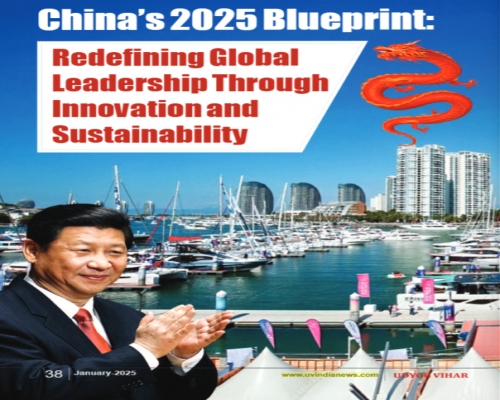"China's 2025 Blueprint: Redefining Global Leadership Through Innovation and Sustainability"

China’s Blueprint for Economic Domination: Ruthless Efficiency and Bold Strategies
China’s meteoric rise as a global economic powerhouse is no accident. It results from deliberate policies, ruthless execution, and an unwavering focus on industrialisation. Over the years, China has demonstrated a unique ability to transform its landscape rapidly, driven by its authoritarian governance structure, cutting-edge engineering, and robust infrastructure development.
How China Became an Economic Giant
1. Commanding Eminent Domain:
China's government has perfected the use of eminent domain to clear land for large-scale projects. Land acquisition is completed within months with no delays from public protests or legal roadblocks. Residents are compensated swiftly, with relocation plans executed at lightning speed. This efficiency has enabled the rapid development of dams, highways, and cities.
2. Strategic Land Leasing:
A significant portion of China's rural land is leased for 99 or 999 years. The government retains control, making it easy to reclaim land for redevelopment. Relocated residents receive equivalent land and modern housing, ensuring minimal resistance.
3. Engineering Excellence:
China invested heavily in sending students and professionals abroad during the 1970s and 1980s. They returned with world-class expertise, laying the foundation for a generation of exceptional engineers. By 2005, Chinese engineers were among the best globally, contributing to cutting-edge infrastructure projects.
4. Blitzkrieg Construction:
Borrowing the concept of blitzkrieg, China applies military-like precision to its construction projects. Geotechnical engineers, advanced machinery, and a skilled workforce combine to deliver mega-projects in record time. Roads, railways, and skyscrapers are built quickly and efficiently using premium materials like G4 rubber asphalt composites.
5. Transparent Power Committees:
China’s centralised power committees, restructured every five years, oversee infrastructure projects without interference from local authorities, courts, or opposition leaders. This streamlined decision-making process eliminates bureaucratic delays and corruption, ensuring swift project completion.
6. Locally Manufactured Machinery:
China produces nearly all its construction machinery domestically, reducing reliance on imports and keeping costs low. In contrast, countries like India rely heavily on imported or foreign-designed equipment, slowing down projects.
The Results Speak Volumes
● Rapid Urbanization: Villages and towns have been transformed into modern urban hubs within months. Entire villages are relocated, and residents are provided with better homes and amenities.
● Industrial Supremacy: By maintaining tight control over land, resources, and labour, China has positioned itself as the world’s manufacturing leader, surpassing nations like India in productivity and infrastructure development.
● Global Recognition: Today, China’s GDP, measured in Purchasing Power Parity (PPP), is the largest in the world. Its infrastructure rivals developed nations, and its engineering expertise is second to none.
Lessons for the World
China’s success is built on decisive governance and a relentless focus on efficiency. While its methods may seem harsh, the results highlight the power of streamlined decision-making and strategic planning. China's model offers valuable insights into accelerating development for nations like India, which struggle with bureaucratic hurdles and delays.
However, this efficiency comes at a cost—sacrificing individual freedoms and democratic processes for progress. Whether other countries can adopt China’s approach while preserving democratic values remains a question for policymakers worldwide.
As the world watches China’s rise, its blend of bold governance and technological prowess redefines economic development limits.























